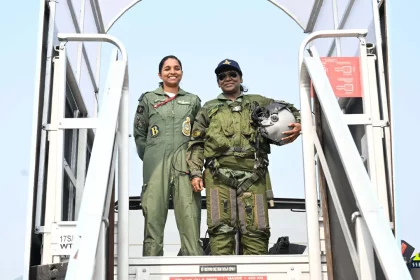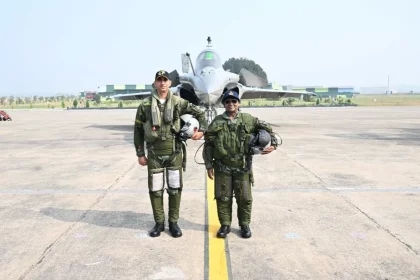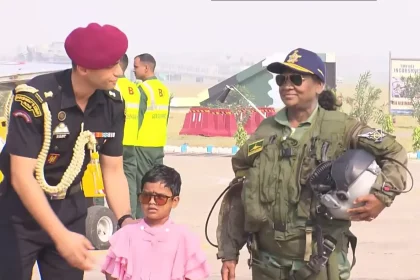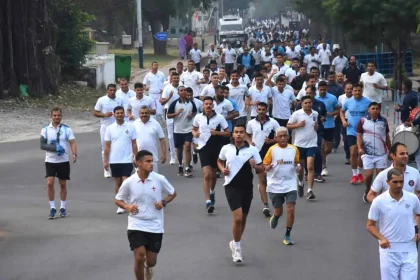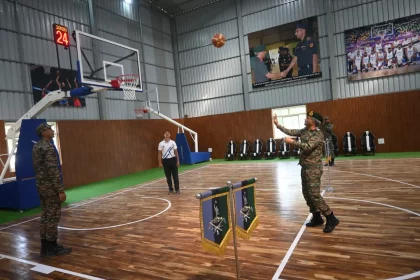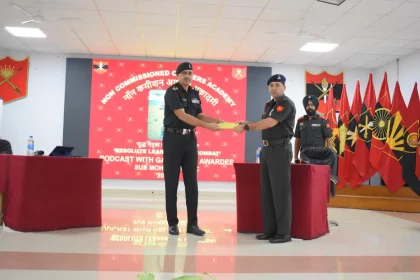Squadron Leader Shivangi Singh Clicks Picture with President Droupadi Murmu after Rafale Sortie at Ambala
This historic event stands as a testament to India’s growing air power and the inclusive spirit of the armed forces,…
Group Captain Amit Gehani Takes President Droupadi Murmu on Rafale Sortie at Ambala
The sortie with the President was not only a ceremonial milestone but also a testament to the confidence and trust…
President Droupadi Murmu Achieves Milestone with Rafale Fighter Jet Sortie at Ambala Air Force Station
This sortie not only represents a personal achievement for the President but also aligns with broader efforts to showcase the…
Air Force Station Pune to Host First-Ever “Sekhon Indian Air Force Marathon 2025” on 2 November
Event dedicated to Flying Officer Nirmal Jit Singh Sekhon, PVC — celebrating valour, fitness, and the Air Force spirit.
Western Command Inaugurates State-of-the-Art Basketball Node at Patiala Under Mission Olympics
New sports facility to boost Army’s professional basketball training and holistic fitness.
NCO Academy Dhana Hosts First-Ever ‘Veergatha’ Podcast with Shaurya Chakra Awardee Subedar Mohan Ram
Gallantry awardee shares combat leadership lessons and battlefield experiences with NCO trainees.

